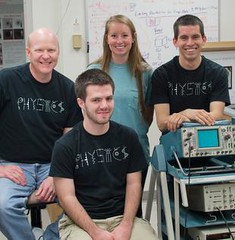
PREV ARTICLE
NEXT ARTICLE
FULL ISSUE
PREV FULL ISSUE
3-D IMAGING REVEALS AND RECONSTRUCTS OBSCURED ARTIFACTS
I didn't include this article in last week's issue because I thought it was a bit too technical for our purposes. But I did send it to Bob Evans, and wanted to publish his thoughtful reply. As readers know, Bob has been long associated with the SS Central America recovery project, and is currently as sea continuing to catalog artifacts brought up from the ocean's depths. First, an excerpt from the article.
-Editor
For them, the prize is in the discovery – uncovering clues about life in the early 1700s, perhaps even solidifying evidence that these are indeed pieces from Blackbeard’s ship – and in the chance to gain and share knowledge in many fields based on what they’ve learned from new technology. Their quest revolves around new software that creates a three-dimensional image of an object, enabling views from different angles. Davidson physics professor Dan Boye says the nondestructive X-ray imaging system, created by the Digitome Corp., has applications that aren’t limited to science; the technology can be used for topics of interest in the humanities and social sciences. Some objects are embedded in what’s known as a concretion – a solid, rock-like blob formed by the accumulation of matter, especially within the body or mass of sediment. Often a composite of small concretions builds, layer upon layer, around a small nucleus. These concretions can be a barrier to discovery when using two-dimensional imaging techniques. Ryan Kozlowski, a Davidson physics major and one of the Digitome student operators, said the technology helps remove these obstacles. “One concretion may have lead shot, the remnants of an iron nail and a silver coin, but a 2-D radiograph cannot provide ample spatial information to reveal the arrangement of these objects relative to one another in the concretion,” he said. “Further, an individual object may be at an angle that prevents simple 2-D imaging, or may be too complex to understand from a 2-D image alone. A Digitome 3-D exam of a concretion can overcome these challenges and possibly reveal previously unnoticed objects.” Bob Evans writes: Fascinating stuff. I was aware that this technology was advancing, but this is a pretty good article about an interesting application of it. Techniques like this can rescue information from materials where very little original artifact remains, with only a "fossil" remnant. Actually, concretions like those described remind me very much of fossils, and assure me that my academic background in geology, indeed in paleontology, is completely relevant to much of my professional work.
To read the complete article, see:
High tech tackles Blackbeard’s booty
(www.charlotteobserver.com/2014/08/24/5117348/high-tech-tackles-blackbeards.html#.VAN7wvmzFYE)
The Numismatic Bibliomania Society is a non-profit organization promoting numismatic literature. See our web site at coinbooks.org. To submit items for publication in The E-Sylum, write to the Editor at this address: whomren@gmail.com To subscribe go to: https://my.binhost.com/lists/listinfo/esylum All Rights Reserved. NBS Home Page Contact the NBS webmaster 
|
